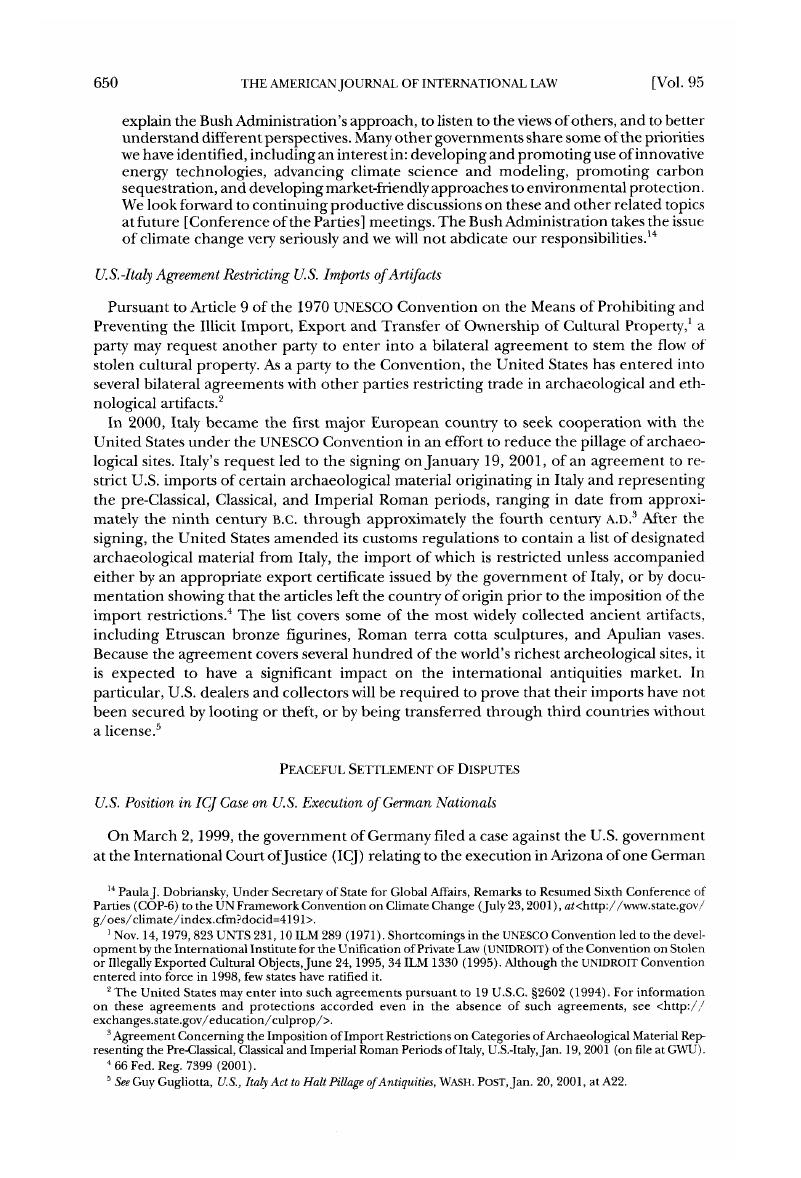No CrossRef data available.
Article contents
U.S.-Italy Agreement Restricting U.S. Imports of Artifacts
Published online by Cambridge University Press: 06 June 2017
Abstract

- Type
- Contemporary Practice of the United States Relating to International Law
- Information
- Copyright
- Copyright © American Society of International Law 2001
References
1 Nov. 14, 1979, 823 UNTS 231, 10 ILM 289 (1971). Shortcomings in the UNESCO Convention led to the development by the International Institute for the Unification of Private Law (UNIDROIT) of the Convention on Stolen or Illegally Exported Cultural Objects, June 24, 1995, 34 ILM 1330 (1995). Although the UNIDROIT Convention entered into force in 1998, few states have ratified it.
2 The United States may enter into such agreements pursuant to 19 U.S.C. §2602 (1994). For information on these agreements and protections accorded even in the absence of such agreements, see <http://exchanges.state.gov/education/culprop/>.
3 Agreement Concerning the Imposition of Import Restrictions on Categories of Archaeological Material Representing the Pre-Classical, Classical and Imperial Roman Periods of Italy, U.S.-Italy, Jan. 19, 2001 (on file at GWU).
4 66 Fed. Reg. 7399 (2001).
5 See Gugliotta, Guy, U.S., Italy Act to Halt Pillage of Antiquities, Wash. Post, Jan. 20, 2001, at A22.Google Scholar




